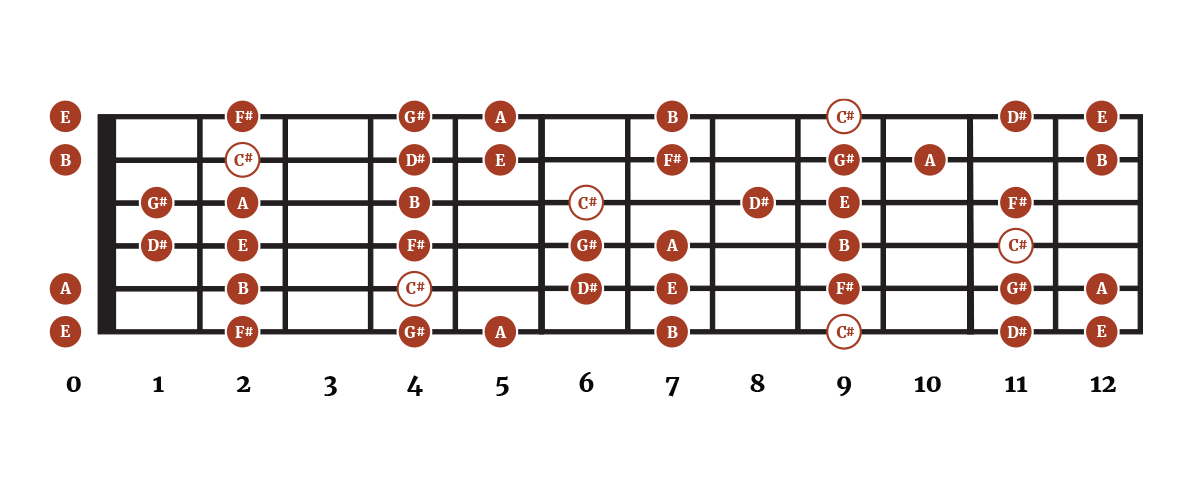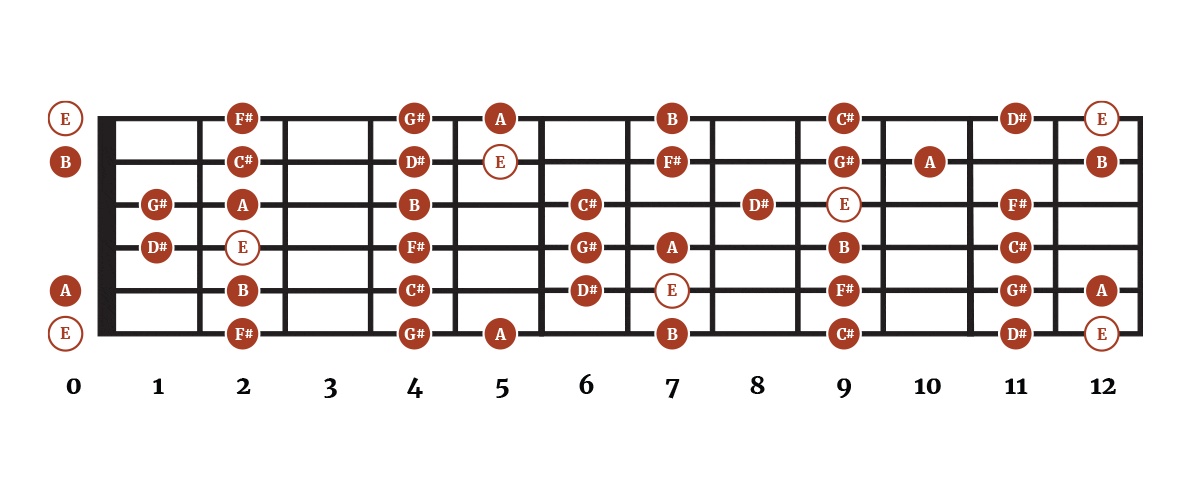The key of C# minor contains the notes: C# – D# – E – F# – G# – A – B

When assembled in order the notes form the C# natural minor scale (aka Aeolian mode). You can more about musical keys here.
C# Minor or Db Minor?
On guitar, the choice between C# minor and Db minor often depends on the musical context. However, as the key signature of C# has fewer accidentals (4 sharps, as opposed to 7 flats) C# is more commonly used.
The theoretical key (not commonly encountered in practice) of Db minor would require the use of double flats to maintain the use of each of the 7 note letter names e.g. Db – Eb – Fb – Gb – Ab – Bbb – Cb, making it impractical in standard music notation.
The C# Minor Scale Step Pattern

The C# minor scale (like all minor scales) follows the step pattern of:
whole, half, whole, whole, half, whole, whole
The C# Minor Scale on Guitar
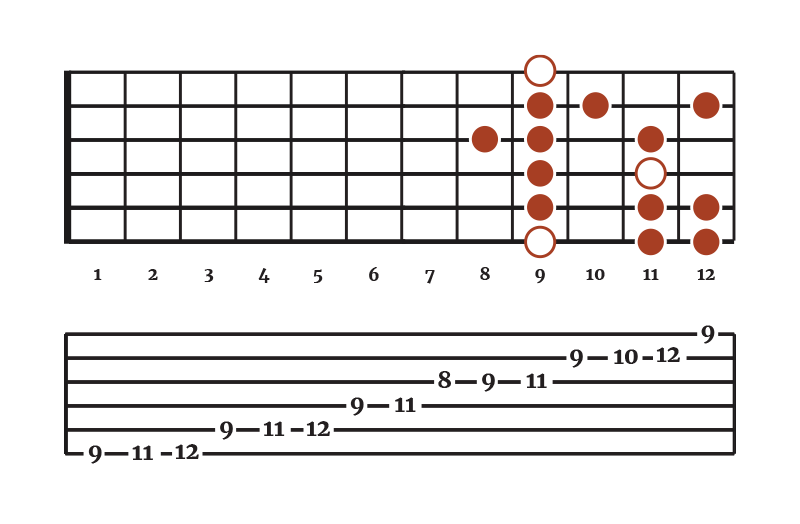
This is just one way to play the C# natural minor scale. Keep in mind scales can be played in many different ways.
Chords In The Key Of C# Minor
All chords within a minor key such as C# minor follow a step pattern of:
minor, diminished, Major, minor, minor, Major, Major
| min | dim | Maj | min | min | Maj | Maj |
| c# | d# | E | f# | g# | A | B |
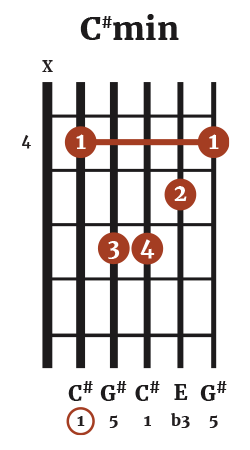
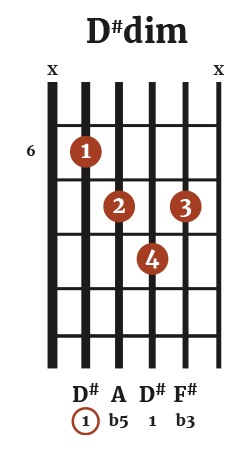
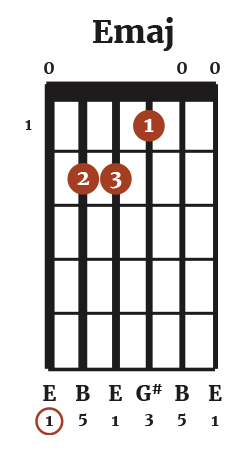
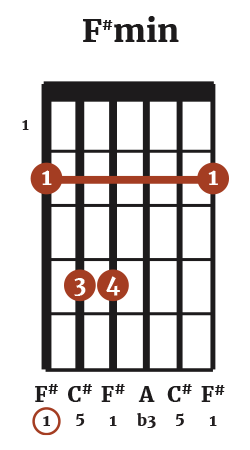
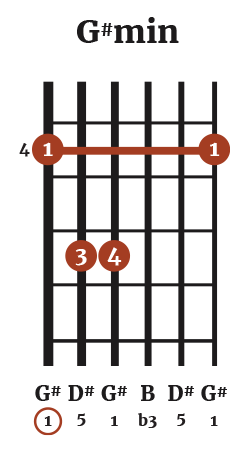
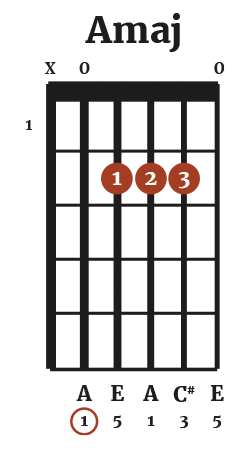
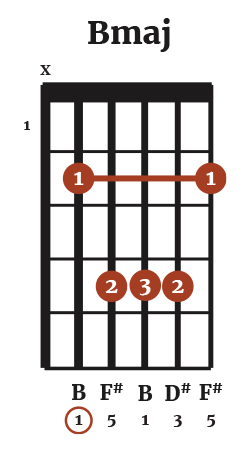
To construct a minor chord, we can start by building a major chord using the 1st, 3rd, and 5th notes (scale degrees) of the corresponding major scale. For example, in the Db major scale (Db is usually preferred to C#, although both contain the same notes), we find the notes C#/Db (1), F (3), and G#/Ab (5).
To transform this major chord into a minor chord, we introduce a subtle yet significant change, by lowering the F note (which corresponds to the 3rd scale degree of the major scale) by one-half step (semitone), effectively moving it down one fret on the guitar. This simple modification shifts the chord quality from major to minor, resulting in the notes C# (1), E (b3), and G# (5).
| Chord | Notes |
| c# minor | C#, E, G# |
| d# diminished | D#, F#, A |
| E Major | E, G#, B |
| f# minor | F#, A, C# |
| g# minor | G#, B, D# |
| A Major | A, C#, E |
| B Major | B, D#, F# |
7th Chords in C# Minor
Seventh chords are four-note chords (unlike triads which contain 3 notes) that include the tonic (1st), third, fifth, and seventh scale degrees of a diatonic scale (a seven-note musical scale consisting of whole and half steps).
The seventh chord quality can vary depending on the type of seventh interval used in the chord. There are several types of seventh chords, each with its unique sound and function in music.
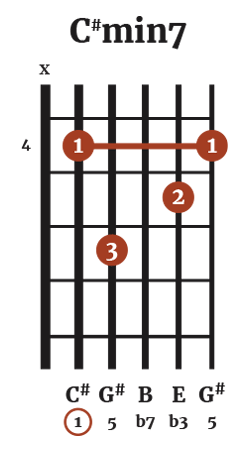
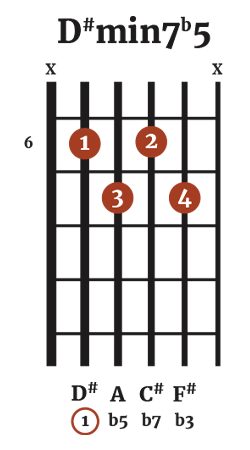
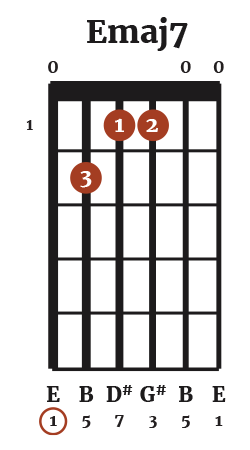
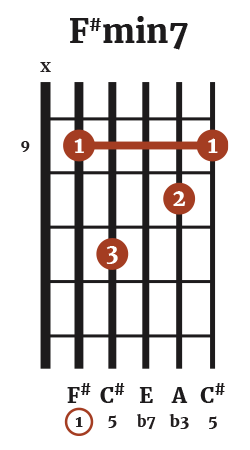
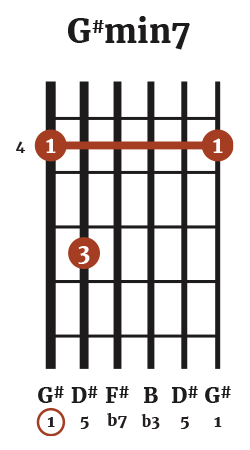
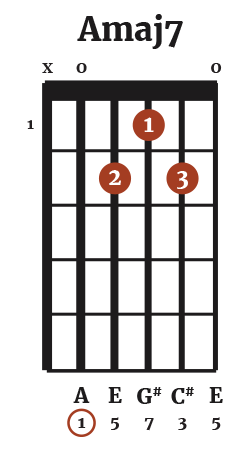
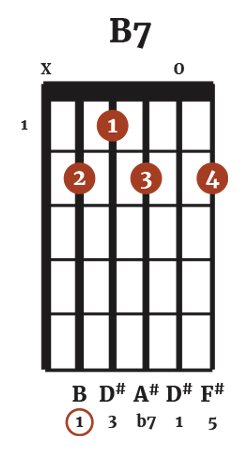
| Chord | Notes |
| c# minor 7 | C, E, G#, B |
| d# minor seventh flat five | D#, F#, A, C# |
| E Major 7 | E, G#, B, D# |
| f# minor 7 | F#, A, C#, E |
| g# minor 7 | G#, B, D#, F# |
| A Major 7 | A, C#, E, G# |
| B Dominant 7 (G7) | B, D#, F#, A |
Chord Function
Chords play roles within keys due to the interplay between the notes that make up the chords.
| Tonic | Supertonic | Mediant | Subdominant | Dominant | Submediant | Subtonic |
| i | ii | III | iv | v | VI | VII |
| c#m | d#dim | Emaj | f#min | g#min | Amaj | Bmaj |
Understanding chord function within minor keys allows musicians to explore the emotional and harmonic possibilities of minor tonalities.
For example, The i chord (minor tonic) serves as the central point of stability in a minor key. As it is constructed on the tonic note of the minor scale (e.g., C# in the key of C# minor). This chord provides a sense of resolution.
Alternatively, In the key of C# minor, the dominant chord is g#min which creates a strong pull toward the tonic chord, C# minor, creating a sense of resolution when the chord progression resolves back to the tonic.
Common Chord Progressions In C# Minor
| i – VI – VII | c#min – Amaj – Bmaj |
| i – VII – iv- VI | c#min – Bmaj – f#min – Amaj |
| i – v – VI – VII | c#min – g#min – Amaj – Bmaj |
| i – III – VII – VI | c#min – Emaj – Bmaj – Amaj |
| i – v – iv – VII | c#min – g#min – f#min – Bmaj |
Relative Major
Relative major refers to the major key that shares the same key signature as a minor key. In other words, they use the same set of notes, but their tonal centers (the tonic) are different e.g. the relative minor starts on the 6th scale degree of the relative major. In a minor key, the relative major’s tonic note is the 3rd scale degree of the relative minor scale, meaning in the key of C# minor, E Major is the relative major.
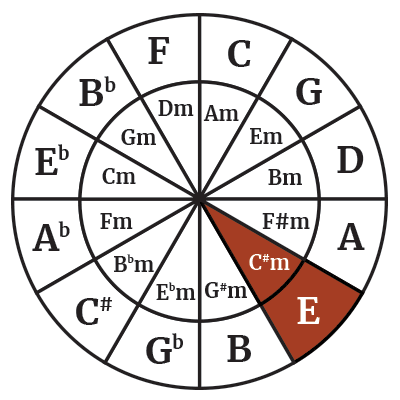
Resources
- PDF download showing the notes, scales, and chords in the key of C# minor.
- Learn how to read chord charts
- Learn how to read guitar tab
